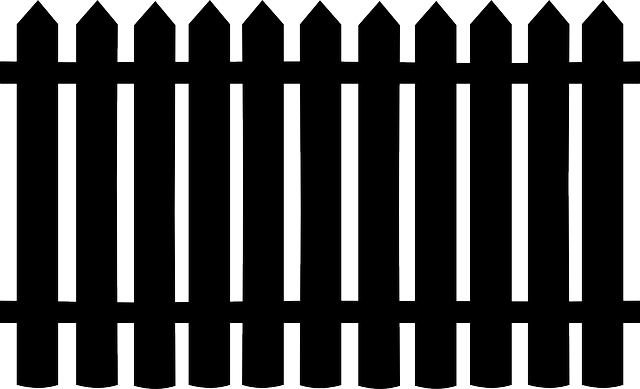In the heart of New Bedford, MA, a growing awareness of environmental sustainability extends beyond community efforts and into individual yard transformations. This article explores eco-friendly fencing materials and their multifaceted benefits, from reduced environmental impact to enhanced aesthetic appeal. We delve into the various options available, their installation, longevity, cost comparisons with traditional fences, and local initiatives promoting green landscaping practices. Embrace a future where your fence not only defines your space but also contributes to a healthier planet.
- Understanding Eco-Friendly Fencing Options in New Bedford
- Benefits of Using Sustainable Fencing Materials
- Popular Eco-Conscious Fencing Choices for Your Yard
- Installation and Longevity: An Eco-Friendly Perspective
- Cost Analysis: Green Fencing vs Traditional Fences
- Local Initiatives Promoting Eco-Friendly Landscaping
Understanding Eco-Friendly Fencing Options in New Bedford
In New Bedford, MA, understanding eco-friendly fencing options is more than just a trend; it’s a responsible choice for both your property and the environment. These materials are designed to minimize harm to nature while offering durable and aesthetically pleasing solutions for your outdoor spaces. Local residents and businesses are increasingly adopting these options due to their numerous benefits.
Eco-friendly fencing can be crafted from recycled plastics, wood certified by sustainable forests, or organic materials like bamboo. Each option boasts unique advantages, such as reduced carbon footprint, resistance to rot and insects, and minimal maintenance requirements. By opting for eco-friendly fencing, New Bedford residents contribute to the city’s green initiatives while enhancing their properties’ beauty and value.
Benefits of Using Sustainable Fencing Materials
Using eco-friendly fencing materials offers a multitude of benefits for both homeowners and the environment in New Bedford, MA. Firstly, these sustainable options reduce the carbon footprint associated with traditional fencing, as they are often made from recycled or renewable resources. This contributes to local environmental conservation efforts and aligns with the growing global push for sustainability.
Moreover, eco-friendly fences can enhance the aesthetic appeal of a property while promoting biodiversity. Many sustainable materials, such as bamboo or recycled plastic, come in various styles and colors, allowing homeowners to choose options that complement their landscapes. Furthermore, these fencing types are often low-maintenance, durable, and resistant to rot and pests, ensuring long-lasting performance with minimal upkeep.
Popular Eco-Conscious Fencing Choices for Your Yard
When it comes to fencing your yard in New Bedford, eco-conscious homeowners have a range of sustainable options to choose from. One popular choice is recycled plastic fencing, which is made from post-consumer waste like plastic bottles and containers. This material is durable, low-maintenance, and requires no painting or staining. It also resists rot, rust, and pests, making it a long-lasting and cost-effective option.
Another eco-friendly fencing choice is natural wood, specifically treated with environmentally friendly preservatives. Pressure-treated wood is resistant to decay and insects, reducing the need for frequent replacement. Opting for locally sourced wood supports the region’s economy and minimizes the carbon footprint associated with transportation. Additionally, wooden fences can be creatively designed, offering both aesthetic appeal and a natural barrier for your outdoor space.
Installation and Longevity: An Eco-Friendly Perspective
The installation process for eco-friendly fencing materials often aligns with sustainable principles, minimizing environmental impact during and after construction. Many natural barriers, like those made from bamboo or recycled plastic, can be installed using less machinery and energy compared to traditional fencing. This reduces carbon footprints associated with manufacturing and transportation.
Longevity is another significant advantage from an eco-friendly perspective. Materials such as treated wood, composite options, or even live fences (like hedges) that grow over time have extended lifespans, reducing the need for frequent replacements. Properly maintained, these choices can endure for decades, significantly decreasing waste and conserving resources compared to short-lived synthetic alternatives.
Cost Analysis: Green Fencing vs Traditional Fences
When considering fencing options for your New Bedford, MA property, a cost-benefit analysis between eco-friendly and traditional fences is essential. While initial installation costs for green fencing materials like recycled plastic or organic wood may be slightly higher, their longevity and low maintenance requirements make them more economically viable in the long run. Traditional fences often require frequent repairs, painting, or replacement, significantly impacting your budget over time.
Moreover, eco-friendly fencing materials offer additional financial advantages through reduced water usage, as many of these products are designed to be drought-resistant, lowering your irrigation expenses. Tax incentives and rebates for adopting sustainable practices further enhance the affordability of green fences, making them an attractive investment for environmentally conscious homeowners in New Bedford.
Local Initiatives Promoting Eco-Friendly Landscaping
New Bedford, MA has been at the forefront of local initiatives promoting eco-friendly landscaping. The city’s commitment to sustainability is reflected in its diverse range of green infrastructure projects. One notable example is the implementation of biological fencing, which uses native plant species to deter pests and support local biodiversity. These living barriers not only enhance the aesthetic appeal of neighborhoods but also provide habitats for birds and insects, contributing to a healthier ecosystem.
Additionally, New Bedford has encouraged residents and businesses to adopt sustainable landscaping practices through educational programs and incentives. The city offers grants and resources for installing rain gardens, which help manage stormwater runoff, and the use of native plants in private gardens. These initiatives not only promote environmental conservation but also reduce maintenance costs and water usage, making them a win-win for both residents and the planet.
